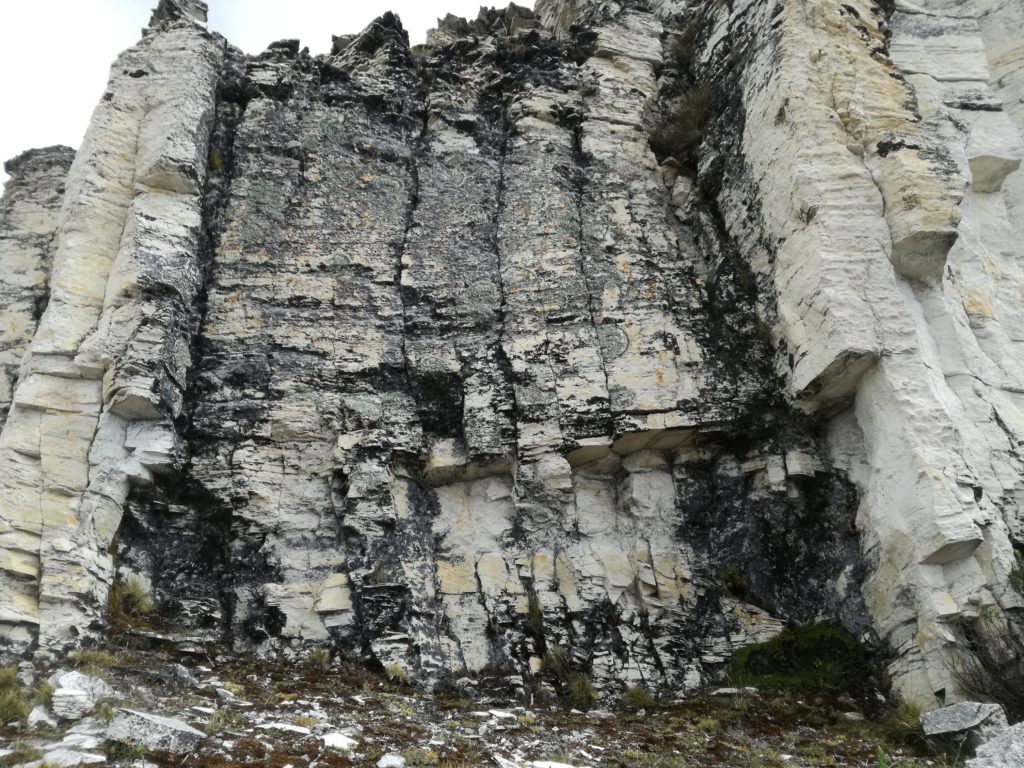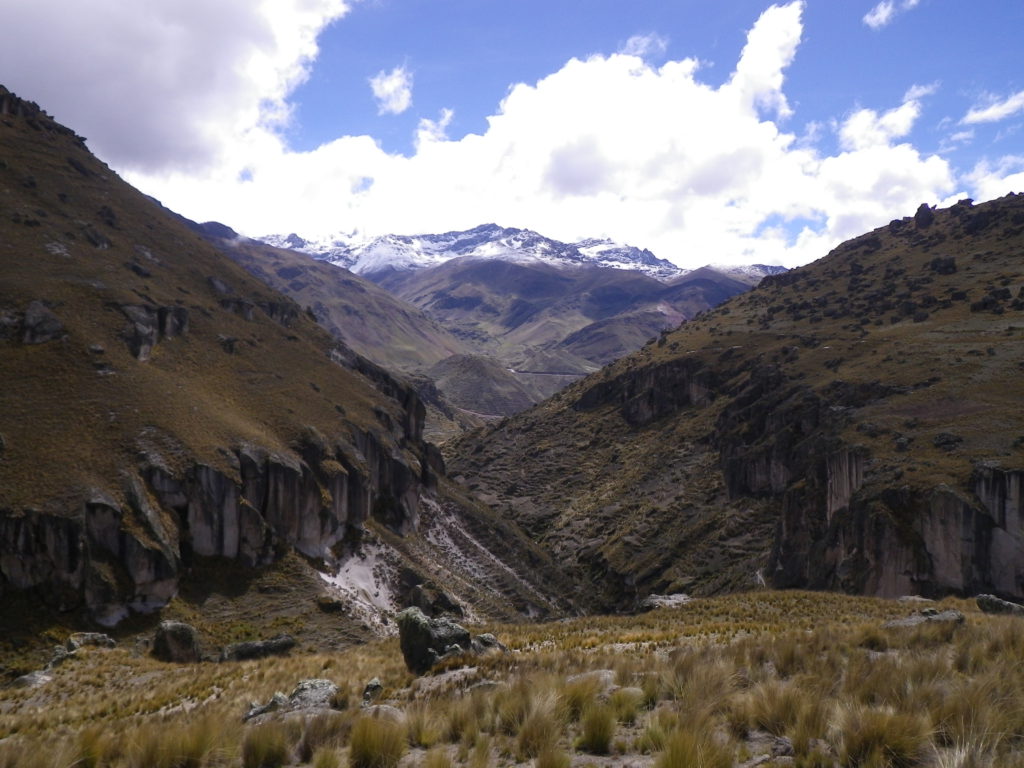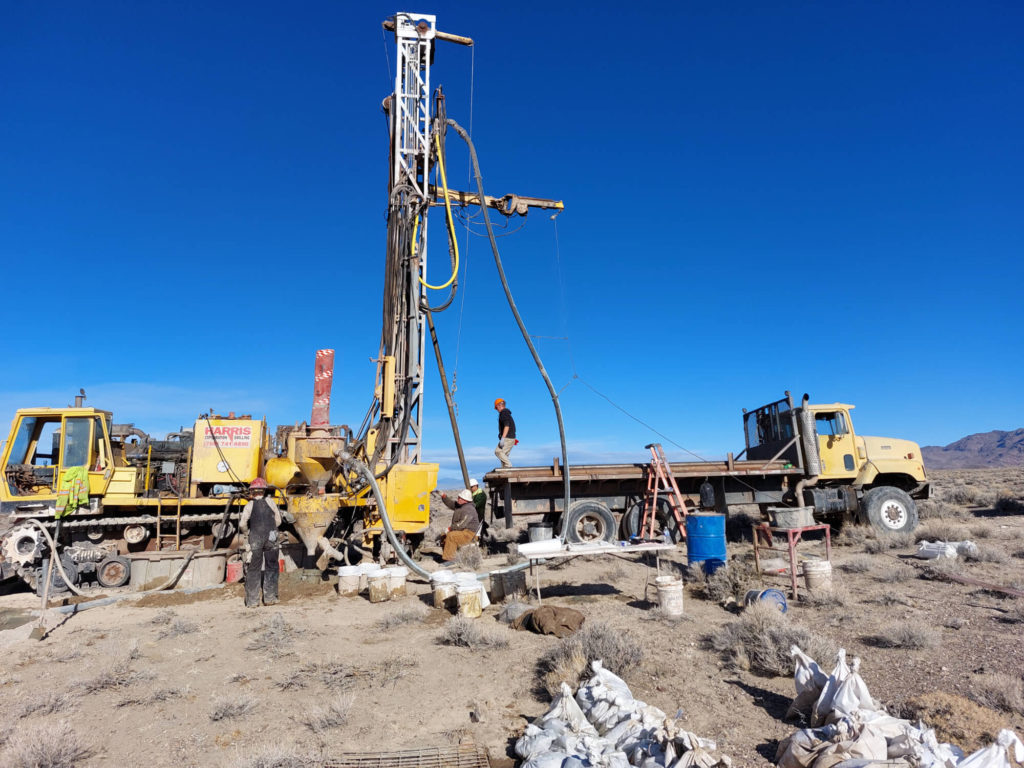Developing a domestic supply of critical minerals
Interview with Simon Clarke, CEO of American Lithium
Earlier this year, American Lithium Corp. announced it has received approval to list its common shares on the Nasdaq Capital Market, and trading commenced at the opening of markets on Tuesday Jan. 10, 2023, under the symbol “AMLI.”
American Lithium is actively engaged in the development of large-scale lithium projects within mining-friendly jurisdictions throughout the Americas. In the U.S., the company is currently focused on enabling the shift to the new energy paradigm through the continued development of its strategically located Tonopah lithium claims (TLC) claystone project in the richly mineralized Esmeralda lithium district in Nevada, as electric vehicle (EV) makers are hoping that a spike in domestic lithium supply will bring much needed support for their expansion plans.

Currently, the global production of lithium is dominated by pegmatite and closed-basin brine deposits, but there are significant resources in lithium-bearing clay minerals, oilfield brines, and geothermal brines. Brines in the middle of Chile’s Salar de Atacama contain the world’s highest known concentrations of lithium.
I caught up with Simon Clarke (SC), CEO of American Lithium, who was in Peru during a coup d’état last December, after he returned to his office to discuss the recent updates for the company’s major projects, spin-out announcement, and other updates. American Lithium continues to advance its Falchani lithium and Macusani uranium development-stage projects in southeastern Peru. Both Falchani and Macusani have been through robust preliminary economic assessments, exhibit strong significant expansion potential, and enjoy strong community support.
CMJ: Could you please talk to us about your professional background and how you became the CEO of American Lithium?
SC: I trained as a lawyer in Scotland. I hold an LLB and diploma in legal practice from Aberdeen University, Scotland. Then, I went to the bright lights of London in the early nineties as a newly qualified lawyer. I worked in London as a securities lawyer for four years and then moved into small mid-caps banking, corporate brokering as they call it over there. I was offered a job in Vancouver with Deloitte on their corporate finance side in 2000. Vancouver was a place that we loved from the day we got there, and we made it our home. Then, I moved from Deloitte into the world of junior mining companies.
For more than 25 years, I have been involved in building companies and implementing successful capital markets and growth strategies focused on mining, energy, and energy technology. Most recently, I was the founder, CEO, and director of M2 Cobalt (cobalt-copper exploration in East Africa) which was sold to Jervois Mining in June 2019. I have accumulated significant experience and knowledge of the battery metals space and my roles with M2 Cobalt and Jervois Mining involved managing government and stakeholder initiatives relating to the supply of battery metals in several jurisdictions.
I joined the group that had been behind Millennial Lithium as one of the key staff. During the recapitalizing and refocusing of American Lithium, I was asked to sit on the board in mid 2020. Then, having been in that position for a while, and as we were looking to make a major acquisition of Plateau Energy, I was asked to step up to the CEO position in April of 2021, and I have been CEO since then.
I was also a co-founder, executive, and director of Osum Oil Sands and, together with former American Lithium CEO, Michael Kobler, helped build a company valued at more than US$1 billion at the peak of oil sands valuations. Osum was recently acquired by Watreous Energy.
Environmental advantages of the TLC deposit
> No water issues: Entire resource is above the water table; no groundwater, run-off, or watershed issues; and water rights are secured.
> No endangered species: No species or habitat protected under the Endangered Species Act.
> Low deleterious elements: Low contaminants in waste material.
CMJ: In your opinion, what are the key milestones in American Lithium’s history? Could you please talk to us about American Lithium’s assets and the countries you are operating in?
SC: American Lithium started in 2015 and focused on the brines. The main producing areas in the world are hard rocks, largely in Australia, and some are starting to happen now in North America. In South America, it is mainly brine. At that time, the brine had been successful, and there was a small brine production in Nevada from the only producing mine in North America which is Silver Peak.
Processing advantages of the TLC deposit
> Simple lithium upgrading: Gravity separation upgrades lithium.
> Unique claystone characteristics: Near surface, easy to mine, and highly leachable; lithium is weakly bound to the clays.
The company produced 3,000 to 4,000 barrels of lithium. I was not involved at that time. The company raised money, did some drilling, and figured out that brine does not have the grades in Nevada, certainly not like South America at that point. So, Andy Barring, who was one of the founders of Millennial Lithium, got involved and refocused the company on claystone, which is the type of deposit/mineralization that started to become a big focus in Nevada. It is in the center of a sedimentary claystone deposit. Andy refocused the company on that in 2017 and 2018. They assessed several packages of land and finally settled on the TLC project, which is a near-surface “Made in America” lithium deposit – one that is amenable to low-cost, sustainable mining methods. Studies show that no protected plant or wildlife species are impacted by these operations.

The TLC claims are located 9.7 km northwest of Tonopah in Big Smoky Valley, which is best known for hosting a large solar power plant. TLC’s proximity to Tonopah offers access to paved roads, electricity, water, and skilled labour. The region is a center of epithermal mineralization that produced 138 million oz. of silver, as well as considerable amounts of molybdenum. On Dec. 1, 2022, the company announced an updated mineral resource estimate (MRE) that significantly increased the contained lithium resources for the TLC project. This MRE was completed as part of the process of compiling the maiden preliminary economic assessment and was incorporated into the mine plan within the PEA, which was released recently on Feb. 1, 2023. Currently, TLC hosts 4.2 million tonnes lithium carbonate-equivalent (LCE) measured resources, 4.6 million tonnes LCE indicated resources, and 1.9 million tonnes LCE inferred resources.
One of the early milestones was the undertaking of benchmark environmental studies, and then ultimately the really big thing that drove the company forward was the very large measured and indicated resources announced in 2020 at a time when critical minerals were really starting to become in focus.
The acquisition of Plateau Energy Metals was the next major milestone, and that closed in May of last year. The acquisition included the advanced-stage Falchani project, which is the sixth largest hard rock lithium deposit in the world. It benefits from a highly sustainable business model in a geopolitically friendly jurisdiction in southern Peru.
Finally, we are very pleased to be joining Nasdaq as this listing marks a major milestone for the company and is a testament to the dedication and hard work of our team. We are confident this listing will elevate American Lithium’s profile in the United States capital markets by providing greater visibility and exposure to a broader institutional and retail investor base.
As for the current assets, there are three very large development stage assets: The TLC lithium project, the advanced-stage Falchani lithium project, and the Macusani uranium project, where we are advancing one of the world’s largest and lowest-cost uranium deposits to help meet the need for clean and efficient energy strategically-sourced in the Americas.
CMJ: Our meeting was delayed because you were caught up in the recent coup d’état in Peru? How does political instability in countries where you have big assets affect the progress of your investments/projects?
SC: Certainly, instability anywhere does not help. For us, it is about stability, and we hope that the situation stabilizes soon. In Peru, the economy has continued to perform well throughout this because they have a very big agricultural sector. They also have a big mining sector that they know is key to the economy.
I know that the interim government that has taken power is looking to bring forward early elections later this year. So, hopefully they will have proper elections that will drive the democratic process forward and will allow us to drive the projects forward. Peru is a big mining jurisdiction. Mining is protected in the constitution. There may be some calls from the left to nationalize mining, but that cannot be done under the constitution. The U.S., Canada, and most countries back the interim government ahead of the near-term elections. For us, we just want to move our projects forward because these projects are very large-scale, world-class assets. Obviously, it makes sense to be patient and we really believe they are going to be not only good for American Lithium and its shareholders, but for Peru and especially for the communities around those projects who are very engaged and supportive.

CMJ: What are the recent updates on the company’s TLC lithium claystone deposit in Nevada?
SC: In the U.S., there is an urgent need to develop domestic sources of supply of critical minerals, including battery-grade lithium. Recently, we announced the results of the preliminary economic assessment (PEA) for the TLC project located in the Esmerelda lithium district northwest of Tonopah, Nevada. This independent PEA was completed jointly by DRA Global and Stantec Consulting and demonstrates that the TLC project has the potential to become a substantial, long-life producer of low-cost lithium carbonate (LCE or Li2CO3) with the potential to produce either battery-grade LCE or lithium hydroxide (LiOH). The PEA base case envisions an initial 4.4 million t/y processing throughput expanding to 8.8 million t/y. The PEA alternative case is identical, but with added production of high purity magnesium sulphate as a by-product over the life of operations.
We are pleased to announce a very robust PEA for TLC. Our team has worked hard and spent considerable time getting an in-depth understanding of TLC mineralization and the best way to recover high-purity lithium utilizing conventional processing methods with the latest techniques and best in class plant and equipment. A significant portion of the processing work has been done to pre-feasibility levels, as we believe this will help us move quickly through the next phases of development. At 99.4% LCE purity, TLC offers the capability to produce either battery-grade lithium carbonate or hydroxide with minimal additional refining.
CMJ: You recently made the decision to pursue a spin-out Macusani uranium into an independent public company. What was the reason for that decision and what’s the timeline for the transition?
SC: Nuclear energy is experiencing a robust renaissance because it clearly stands out as the planet’s cleanest, most cost-effective, and reliable form of 24/7 dispatchable energy. Accordingly, the world’s premier uranium deposits are attracting more and more global interest.
We recently came to realize that we are never going to get value out of it within a lithium developer; it needs to be in its own company. After a review with our advisors, we made the decision to pursue a spin-out of Macusani uranium project into an independent public company.
We think the spin-out of the Macusani project into a stand-alone vehicle will be the preferred route to generate value for American Lithium and its shareholders from the continued development of this large-scale uranium project. The re-structuring of the Macusani project’s ownership is well-advanced, and we could finalize the terms of the transaction by the second quarter in 2023. The issue is that we believe that the current share price does not fully recognize the value of the Macusani project. By structuring an appropriate spin-out into an independent, uranium focused vehicle, the company and our shareholders will benefit from unlocking the value of this project. Additionally, this will allow us to concentrate our efforts on advancing our two premier lithium projects: TLC in Nevada and Falchani in Peru.
CMJ: What is the timeline for the pre-feasibility study (PFS) on the Falchani lithium project after the initiation of an environmental impact assessment (EIA) with SRK Peru?
SC: We are accelerating PFS work at Falchani through the appointment of DRA Global to drive completion of what we believe will be a very robust update to the existing PEA and to fast-track completion of the PFS process. Falchani is a unique, large-scale lithium deposit on which a lot of exploration and development work has already been done. We have been able to build on this through ongoing work at the Australian Nuclear Science and Technology Organization (ANSTO) and the launch of the EIA in August of last year. At the same time, we are delighted to be able to restart drilling at the project, and the fact that the deposit is open in several directions gives us confidence in our ability to materially expand the mineral resources at Falchani. The existence of other key targets in the area surrounding Falchani with similar surface expressions continues to fuel our belief that there are additional deposits on our concessions.
As part of this process, Stantec Consulting will also prepare an updated mineral resource estimate on Falchani which will involve the reclassification of existing resource categories, as well as including new drill data from the recent hydrology drilling which commenced in August 2022.
As announced in June 2022, work by ANSTO validated sulphate of potash as a viable and important by-product at Falchani. ANSTO is now focused on adding sulphate of potash and cesium circuits to the overall flowsheet, while maintaining or increasing the impressive lithium extraction rates and battery-grade purity. It is anticipated that this work will be finalized in the near term.
Finally, the PEA will also be updated to reflect the material increase in lithium carbonate pricing since the original report was published in early 2020, which used a US$12,000 per tonne LCE price. Recent studies on other lithium projects globally have used up to US$24,000 per tonne LCE reflecting material price rises in the commodity over the last two years and anticipated long-term pricing. Higher pricing is even more applicable to Falchani given the potential to precipitate battery-grade lithium carbonate through its flow sheet.
CMJ: Finally, what is your vision for the mining of critical minerals (critical mining) in North America going forward?
SC: One of the drivers in the sector is all the auto makers and end users committed to lithium on the long-term and electric vehicles. We need to produce all the critical minerals that are needed for those products. Historically, North America, like most of the world, has been dependent on other jurisdictions for refined lithium projects, notably China. The problem with lithium is that it is extremely difficult to recover.
We have seen with the issues in Europe (the conflict between Russia and Ukraine) that, when it comes to energy security, we need to be more independent and look after our own supply chain. So, I clearly think the governments in Canada and the U.S. have ultimately recognized that we must develop this domestic critical industry with countries that would be part of a western supply chain. We do have the potential to produce a large portion of what we need.
The governments have done a lot recently, especially with the recent incentives announced by the Canadian government and the Inflation Reduction Act in the U.S., which is a positive step towards helping to incentivize not only domestic production, but that Act also has the potential to apply to countries like Peru and other countries to help make sure that we can secure the supply. The amount of lithium and other critical minerals we need to make this transition is huge.
It is good to see the governments starting to embrace it. My vision is to extend that to all the other players in the western supply chain to get to net-zero by 2050.

Comments